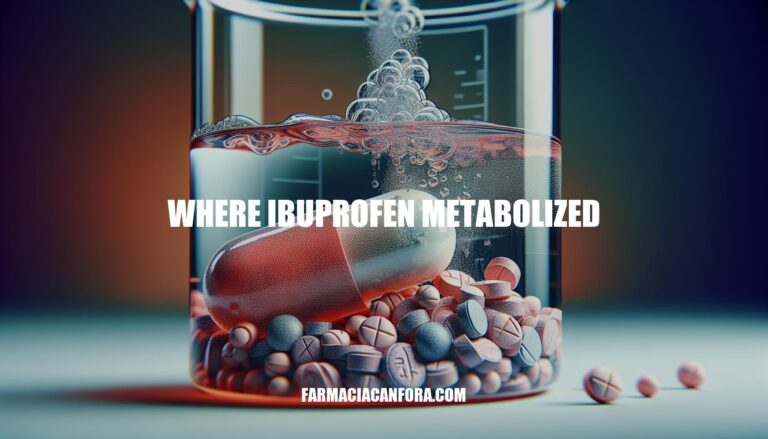


Ibuprofen is a widely used non-steroidal anti-inflammatory drug (NSAID) for pain relief and reducing inflammation. It is primarily metabolized in the liver, where it undergoes extensive biotransformation before being excreted in the urine. Understanding its metabolic pathways is crucial for optimizing its therapeutic effects and minimizing potential side effects.
Ibuprofen is primarily metabolized in the liver. The key enzymes involved in its biotransformation are part of the cytochrome P450 family, specifically CYP2C9 and CYP2C8. These enzymes facilitate the conversion of ibuprofen into its major metabolites, including hydroxy-ibuprofen and carboxy-ibuprofen.
Additionally, UDP-glucuronosyltransferases (UGTs) play a role in the conjugation of these metabolites, making them more water-soluble for excretion.
Cytochrome P450 enzymes play a crucial role in the metabolism of ibuprofen, primarily in the liver. The key enzymes involved are:
These enzymes help convert ibuprofen into more water-soluble compounds, facilitating its excretion from the body.
When ibuprofen is metabolized in the body, it undergoes several transformations:
These metabolites are primarily excreted in the urine.
Metabolism: Ibuprofen is primarily metabolized in the liver by cytochrome P450 enzymes, mainly CYP2C9, CYP2C8, and CYP2C19.
Formation of Metabolites: The metabolism results in hydroxylated and carboxylated derivatives, such as 2-hydroxyibuprofen and carboxyibuprofen.
Conjugation: These metabolites undergo further conjugation, primarily glucuronidation.
Excretion: The conjugated metabolites are then excreted mainly via the urine.
Factors influencing ibuprofen metabolism include:
Ibuprofen is primarily metabolized in the liver by cytochrome P450 enzymes, specifically CYP2C9 and CYP2C8, which convert it into its major metabolites, including hydroxy-ibuprofen and carboxy-ibuprofen.
UDP-glucuronosyltransferases (UGTs) also play a role in conjugating these metabolites for excretion.
Understanding ibuprofen’s metabolic pathways is crucial for optimizing its therapeutic effects and minimizing potential side effects, as factors such as genetic variations, age, and concurrent medications can influence metabolism rates.